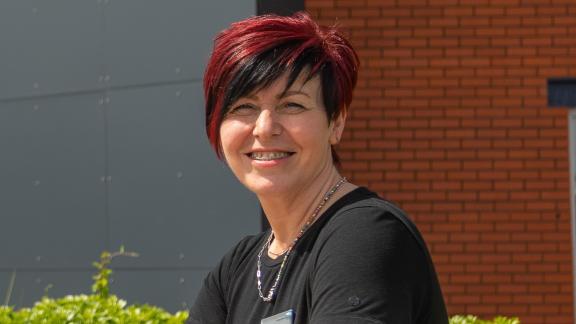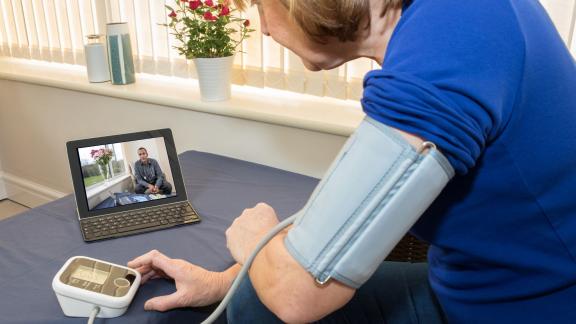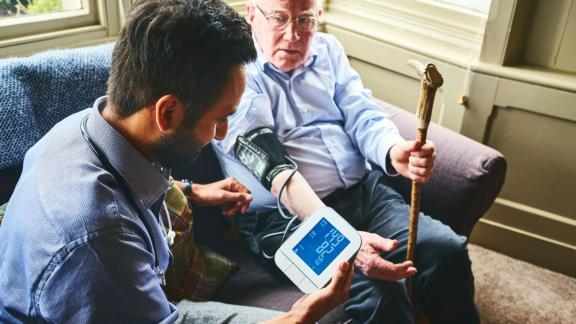No place like home

Given the option, who wouldn’t want to be cared for at home, get to sleep in their own bed and still have direct access to the nurses and doctors who are caring for them? writes Rachael Brown.
COVID-19 provided us with a unique opportunity to relook at community services and expand them to help support and care for people in their own homes, and so the concept of a virtual ward was a natural progression of this. We first developed our virtual ward to support COVID-19-positive patients at home, but then quickly realised that we could build on the same concept for other conditions like asthma, COPD, frailty and paediatrics.
Starting with something quite unique as an answer to managing the huge volume of patients during the pandemic, developed into a much bigger concept of how we can support and care for people in their own homes. The benefits for us didn’t just impact on patient care and their experience, but were also evident in the workforce: recruitment and retention, job satisfaction, as well as efficiencies and improved patient flow through our systems.
If this aids recovery and recuperation on your own terms, why wouldn’t we want to do more of it?
Most of us are aware of the dangers of prolonged hospital stays deconditioning patients, (#pjparalysis) which is particularly evident if you are old and frail and require a hospital stay. Virtual ward provides a solution to this – who wouldn’t want to be cared for at home and get to sleep in their own bed, be able to eat what they want, when they want to and be surrounded by the things and the people they love? If this aids recovery and recuperation on your own terms, why wouldn’t we want to do more of it? Plus, it doesn’t just work well with adults, our paediatrics patients love it too.
Busting a virtual ward myth
One of the myths of virtual ward is that everything is done remotely, which is completely untrue. Most patients get some face-to-face contact, it really depends on what that patient needs. Just like on any hospital ward, patients’ needs can change hourly or daily so it’s important that the team can respond to that. Like any hospital ward, virtual ward does not sit in isolation but has interconnectivity with other services to make it function at its best. If patients become unwell, we can escalate to our two-hour response team, or if they need more face-to-face care, then the Hospital@Home team gets involved. And if the patient just needs a little bit of social support in terms of meal prep or help getting up in a morning or going back to bed at night, we can also utilise our rapid access to social care team.
The best of both worlds
When it comes to workforce, the collaboration between our virtual ward and Hospital@Home team means our nursing team gets the best of both worlds. Not only do they spend time caring for patients virtually, they still get the opportunity to go and provide face-to-face care in patients’ homes. It’s helped with recruitment and retention, as it’s allowed us to retain nurses with a lot of clinical experience who just want to step back from the ‘hustle and bustle’ of frontline care and dedicate their time to providing patients with really bespoke patient-centred care. One nurse on a virtual ward can support about 15-20 patients on a daily basis, in comparison to a medical ward requiring four to five nurses to care for the same cohort if they were in a hospital environment.
I’d like to see a transfer to virtual ward as a part of every patient’s pathway, becoming a seamless move from an emergency department, to a base ward, to home on virtual ward
Our chief executive says that we couldn’t have got through last winter without patients being supported on our virtual ward, and that’s true to a certain extent. There’s still so much more we could be doing to help care for patients safely at home and virtual wards and technology play a massive role in that as part of a ‘step-up ‘or ‘step-down’ model. I’d like to see a transfer to virtual ward as a part of every patient’s pathway, becoming a seamless move from an emergency department, to a base ward, to home on virtual ward. And as soon as you enter the hospital building you automatically have access to tech for monitoring at home. Our patients equally like the freedom virtual ward offers them, plus the accessibility is a big hit – who wouldn’t want direct access to nurses and doctors who are caring for them, whenever you want them, instead of fitting into a hospital regime?
Rachael Brown is group manager of adult community and primary care at the Royal Wolverhampton NHS Trust. You can follow Rachael on Twitter @therachaelbrown



